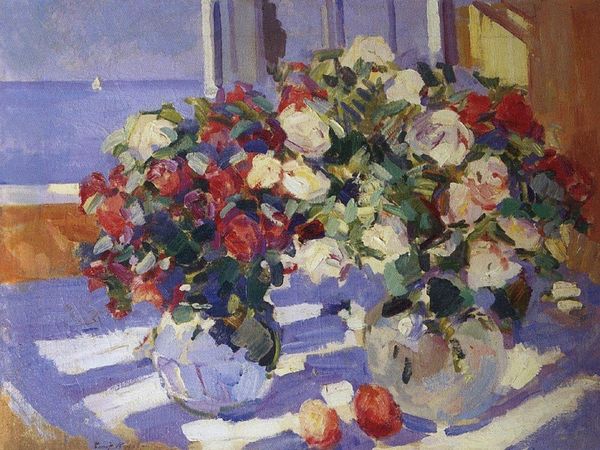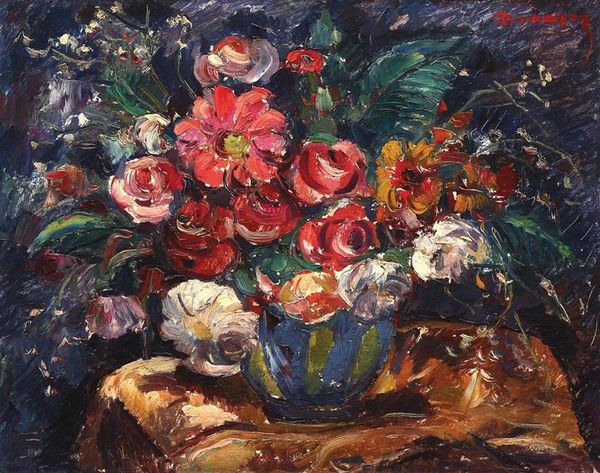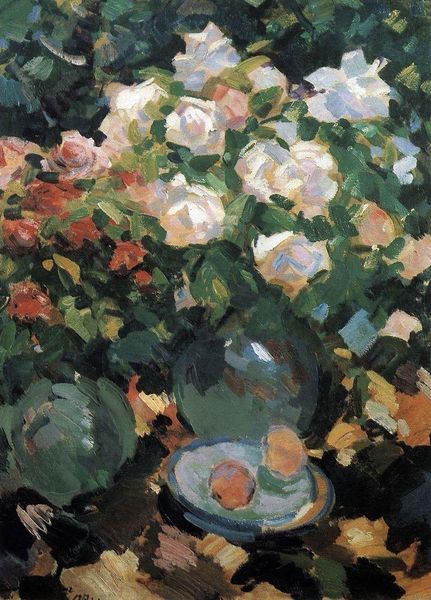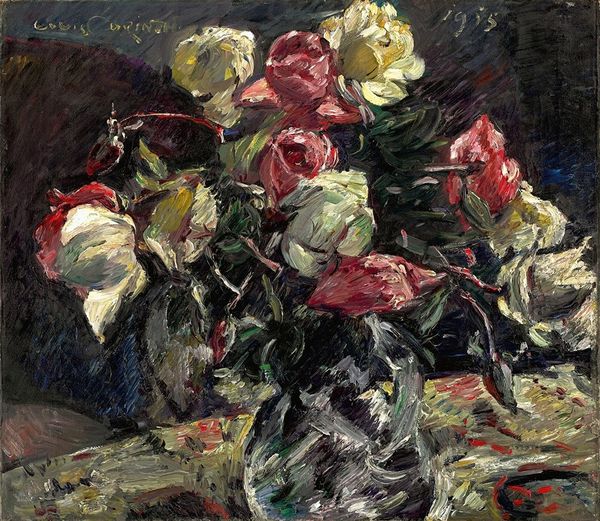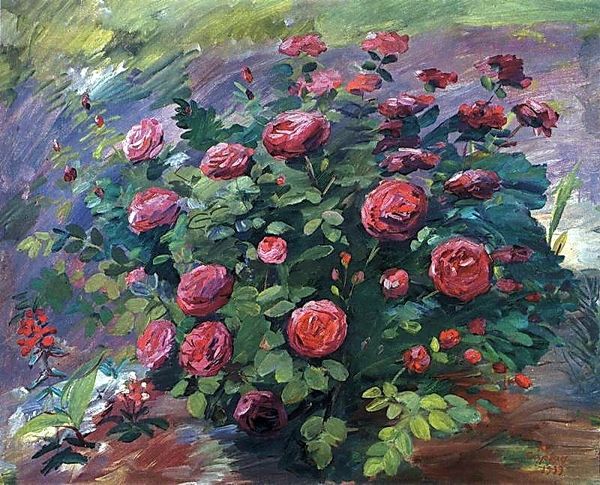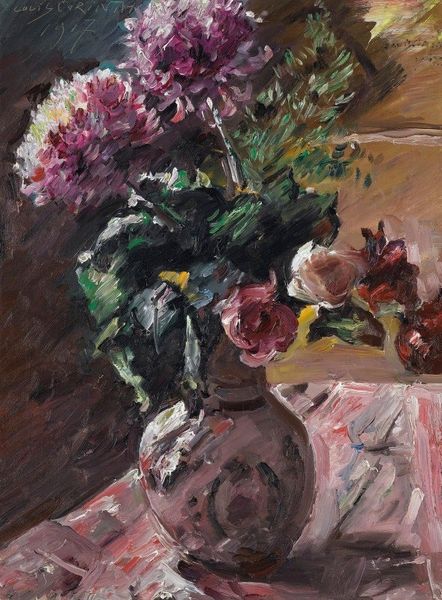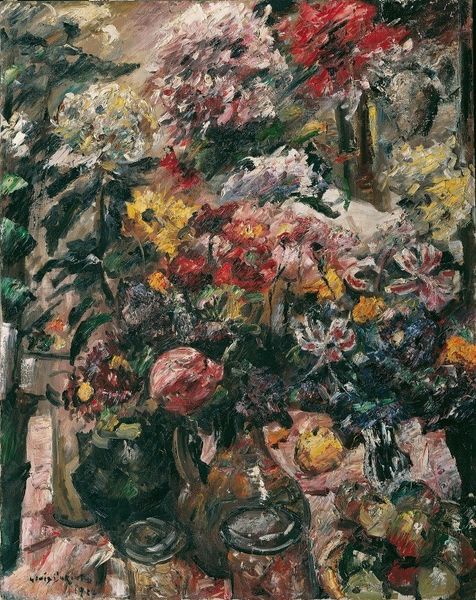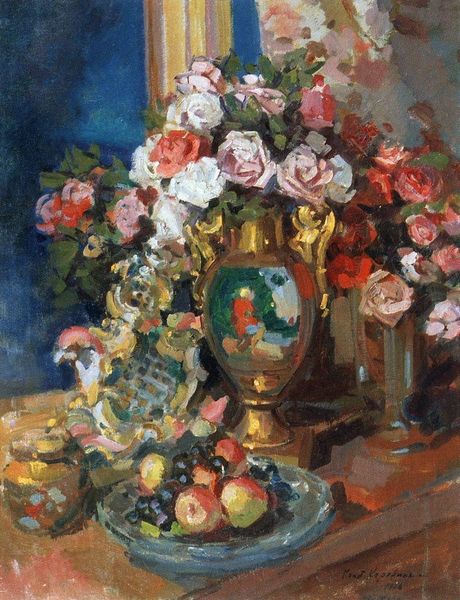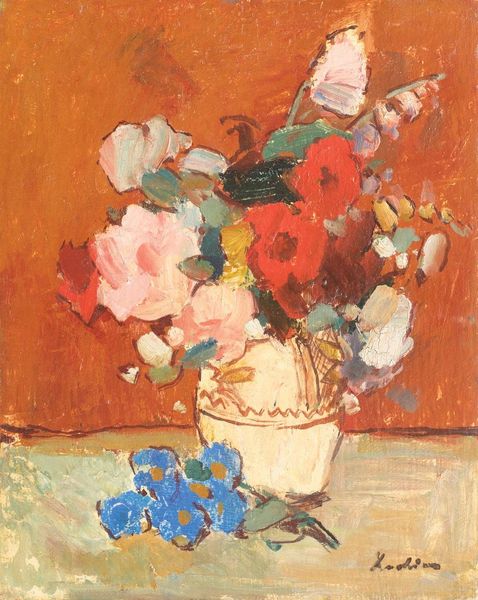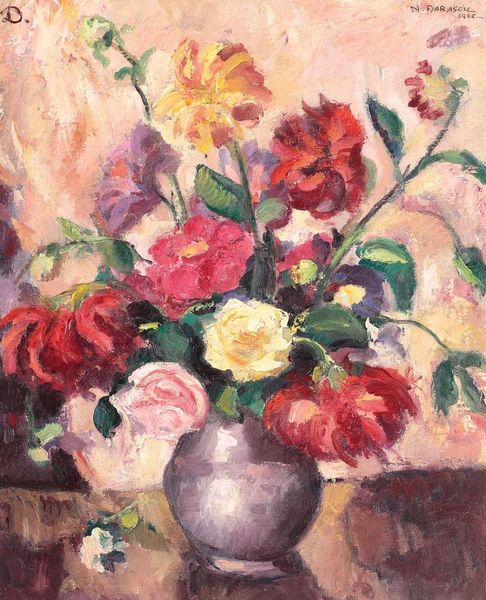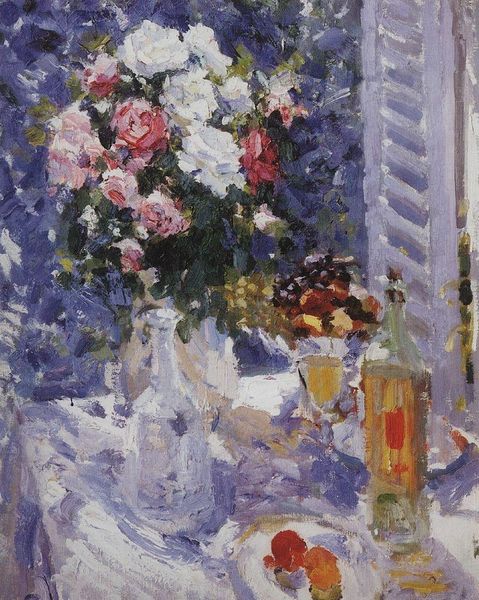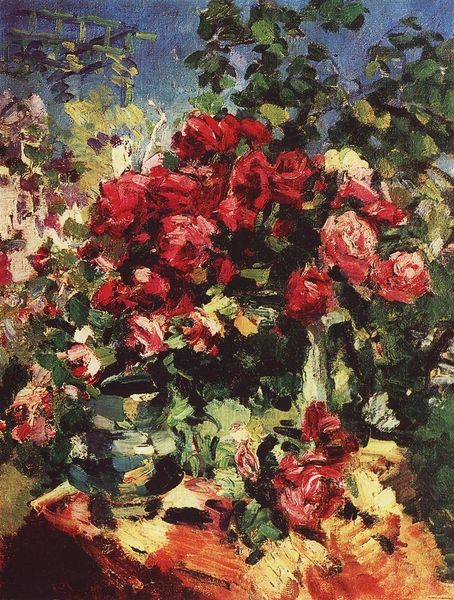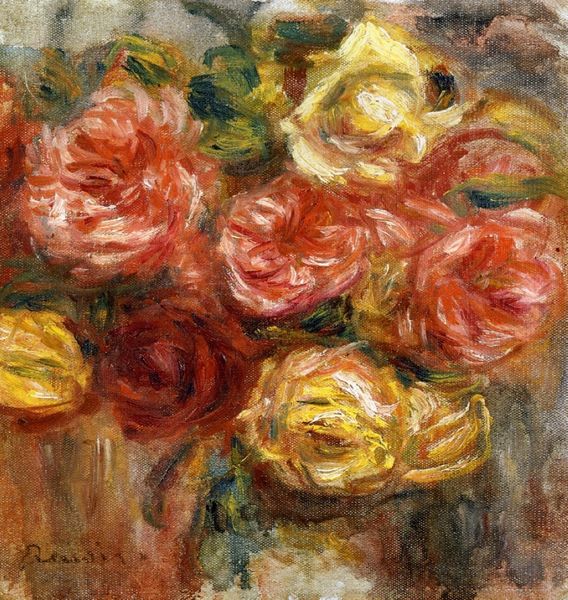
Copyright: Public domain
Curator: Looking at this artwork from 1917 by Konstantin Alexeevich Korovin titled "Roses and Fruit," I'm struck by how it encapsulates the essence of post-Impressionistic still life. Editor: It’s an explosion of color, isn’t it? The brushstrokes feel so liberated, almost ecstatic. The composition, with its overflowing roses and casually arranged fruit, feels utterly lavish and joyous. Curator: The socio-political context of its creation interests me most. Consider that 1917 marked a turning point in Russian history, with immense social and political upheaval during the Russian Revolution. For an artist like Korovin to focus on the intimate and decorative world of "Roses and Fruit" feels poignant. What does prioritizing beauty and pleasure signal? Editor: Perhaps an escape? Or maybe even resistance? In the face of turmoil, creating something so unabashedly beautiful can be an act of defiance, reclaiming a sense of normalcy, joy, and intimacy in the private sphere against the backdrop of public chaos. The sumptuous display itself speaks to access and privilege, and therefore can act as social commentary. Curator: The artwork's themes connect with Korovin's work within Intimism, too. Art for art’s sake was about emphasizing subjective experience, celebrating the ephemeral. What do you read from that perspective? Editor: To me, that artistic choice raises complex questions. Who gets to retreat into intimacy when revolution and war are tearing society apart? Whose experiences and pleasures are deemed worthy of representation? I think such "decorative" work always needs a critical lens trained upon it. Curator: You make an important point. Korovin wasn's interested in Realist painting so this focus on aesthetic qualities provides a counterpoint to narratives preoccupied with austerity or political engagement. It asks us to reconsider our relationship with beauty itself, what it costs and how we view beauty when the world burns. Editor: Exactly! "Roses and Fruit" invites us into a world of color and texture, a sensory indulgence which must coexist in contradiction with our contemporary understanding of power structures. We should explore those tensions. It is how we keep history and the present in dialogue. Curator: It really prompts such necessary, critical reflection! I had considered this lovely, now a much fuller viewing. Editor: Precisely, I too initially took it at face value, a pleasurable feast for the eyes; however, understanding art as a social and political construction can change everything!
Comments
No comments
Be the first to comment and join the conversation on the ultimate creative platform.
